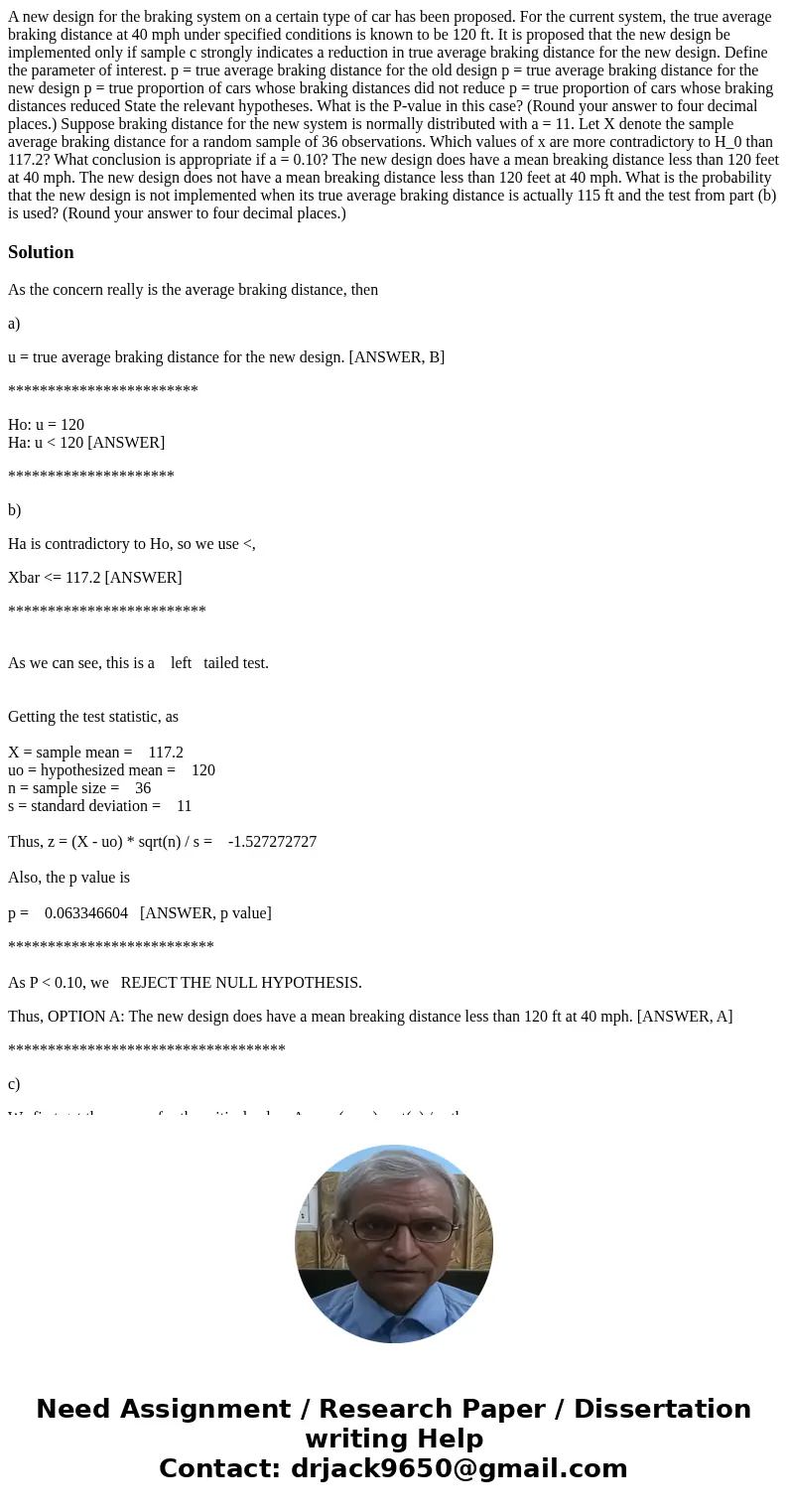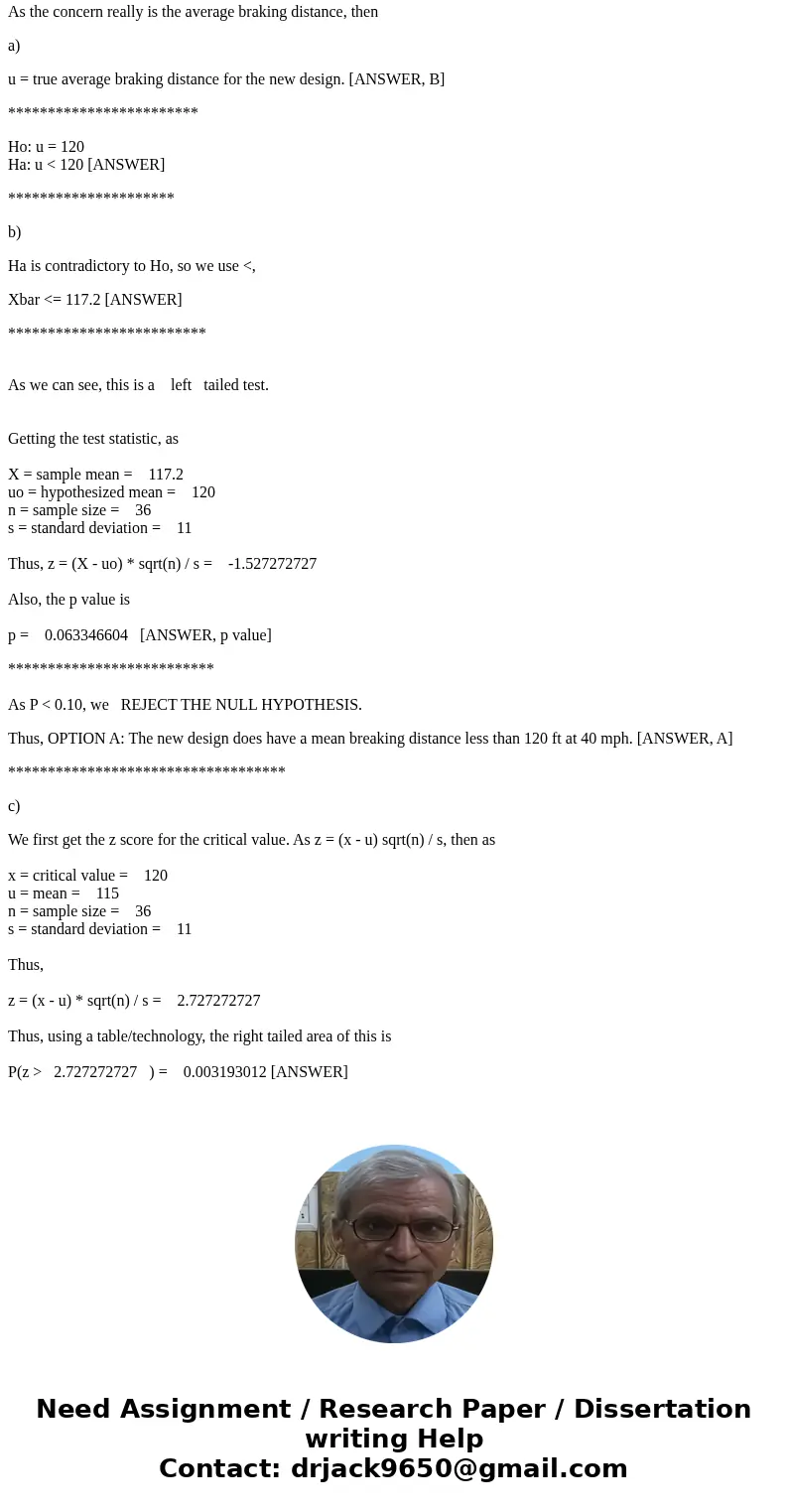A new design for the braking system on a certain type of car
Solution
As the concern really is the average braking distance, then
a)
u = true average braking distance for the new design. [ANSWER, B]
************************
Ho: u = 120
Ha: u < 120 [ANSWER]
*********************
b)
Ha is contradictory to Ho, so we use <,
Xbar <= 117.2 [ANSWER]
*************************
As we can see, this is a left tailed test.
Getting the test statistic, as
X = sample mean = 117.2
uo = hypothesized mean = 120
n = sample size = 36
s = standard deviation = 11
Thus, z = (X - uo) * sqrt(n) / s = -1.527272727
Also, the p value is
p = 0.063346604 [ANSWER, p value]
**************************
As P < 0.10, we REJECT THE NULL HYPOTHESIS.
Thus, OPTION A: The new design does have a mean breaking distance less than 120 ft at 40 mph. [ANSWER, A]
***********************************
c)
We first get the z score for the critical value. As z = (x - u) sqrt(n) / s, then as
x = critical value = 120
u = mean = 115
n = sample size = 36
s = standard deviation = 11
Thus,
z = (x - u) * sqrt(n) / s = 2.727272727
Thus, using a table/technology, the right tailed area of this is
P(z > 2.727272727 ) = 0.003193012 [ANSWER]


 Homework Sourse
Homework Sourse